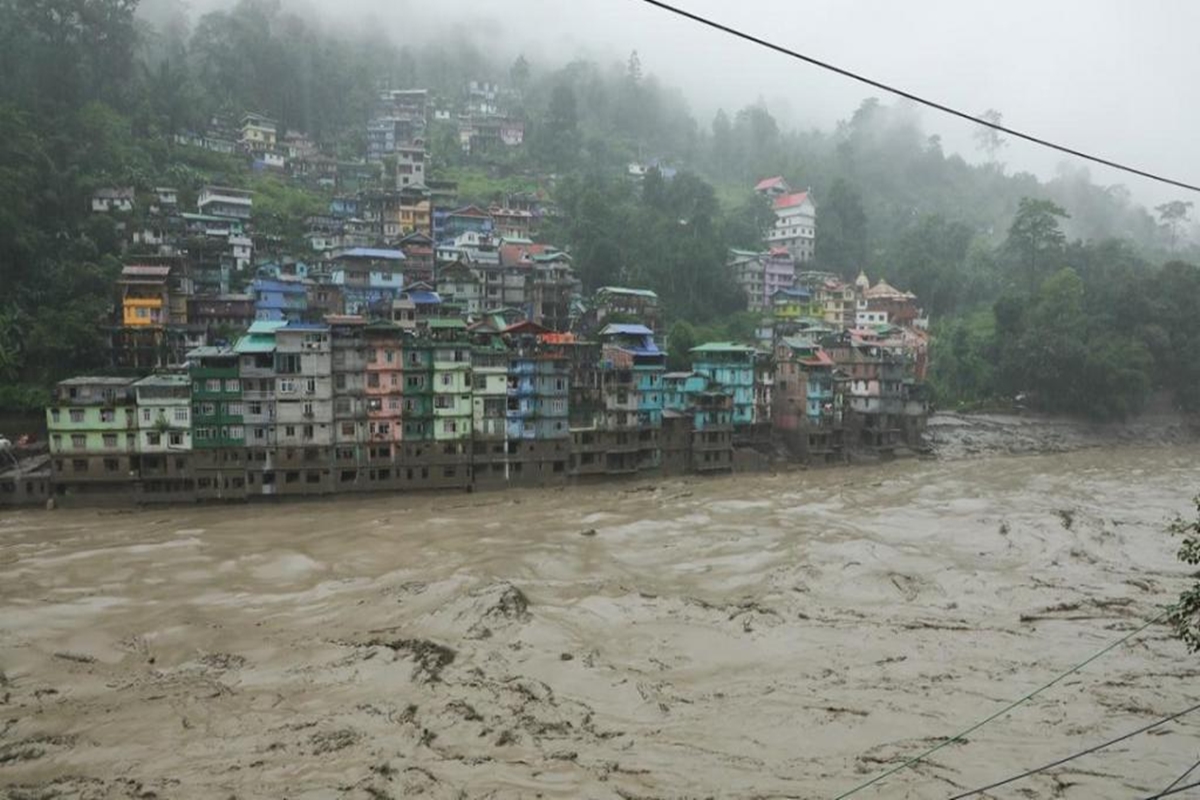In the remote reaches of northeastern India, disaster struck as Lhonak Lake, a glacial-moraine-dammed lake situated in the Himalayan state of Sikkim, unleashed catastrophic floods. This unfortunate event unfolded despite ongoing efforts by scientists and government authorities to implement an early warning system designed to prevent such tragedies.
Heavy rainfall and an avalanche triggered devastating floods that wreaked havoc in mountainous Sikkim state, leaving a trail of destruction and claiming the lives of at least 40 people. This calamity stands as one of the worst to befall the region in half a century, with dozens of individuals still unaccounted for as of Friday.
About the Lhonak lake:
Lhonak Lake, located at an elevation of 5,200 meters (17,100 feet) above sea level, has been expanding at an alarming rate, making it one of the 14 potentially hazardous lakes vulnerable to Glacial Lake Outburst Floods (GLOFs) in the Sikkim Himalaya region. The lake’s growth is primarily attributed to the melting of the Lhonak glacier and the influx of meltwater from neighboring glaciers, including the South Lhonak, North Lhonak, and main Lhonak glaciers. Between 1977 and 2008, the lake’s surface area increased by a substantial 81.1 hectares.
Efforts to mitigate the risk posed by the swelling lake included the installation of monitoring devices meant to relay crucial data to authorities. However, an unexpected glitch occurred when a camera lost power in late September for reasons yet unknown. These monitoring systems received support from the Swiss embassy, with plans in place to incorporate a tripwire sensor. This sensor would activate an alert system capable of warning residents to evacuate should the lake be on the brink of bursting.
Due to logistical constraints, the Indian government was not ready to implement the entire warning system this year. Instead, they divided the process into two stages, according to reports. The incident serves as a stark reminder of the pressing need for robust measures to address the potential threats posed by rapidly expanding glacial lakes in sensitive regions like the Himalayas.











